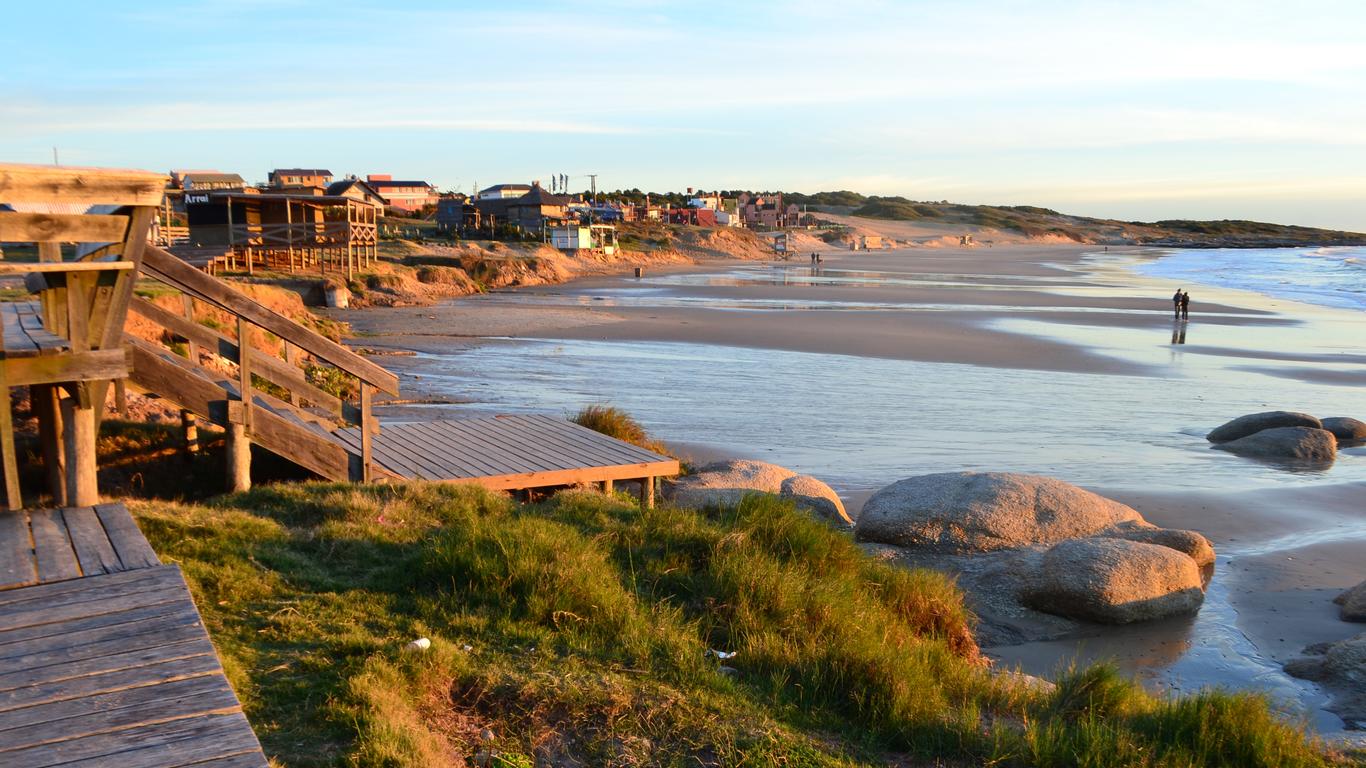



"Rocha" can refer to several things, most notably a Portuguese surname, a city and department in Uruguay, and a neighborhood in Rio de Janeiro. It can also refer to an international conservation organization with a Christian ethos.
Summer (December–March) – Perfect for beach lovers, festivals, and warm weather.
Spring (October–November) – Great for wildlife, mild temperatures, and fewer tourists.
Autumn (March–May) – Quiet and pleasant, ideal for nature trips.
Winter (June–August) – Peaceful and uncrowded, though some places close for the season.
From Montevideo:
~3.5–5 hours by car, depending on which beach town you're heading to.
Take Route 9 east toward Chuy (the Brazil border), passing through Rocha City.
By bus: Regular service to Rocha City, La Paloma, Punta del Diablo, Cabo Polonio, etc. (COT and Rutas del Sol lines).
Getting around: Best with a car or motorbike to explore remote beaches and small villages.
Unique, off-the-grid beach town in a national park. No roads in — you reach it via 4x4 trucks through sand dunes.
Highlights: Giant dunes, sea lions colony, iconic lighthouse, starry nights, eco-hostels, no electricity in homes.
Perfect for: Adventurers, backpackers, nature lovers.
Bohemian fishing and surf village with chilled vibes and rustic charm.
Highlights: Playa de los Pescadores, Playa Grande, Santa Teresa National Park.
Perfect for: Surfing, casual beach life, social backpacker scene.
Family-friendly beach town with good infrastructure and a calm vibe.
Highlights: Playa La Balconada (sunsets!), Playa Los Botes, nightlife in summer.
Perfect for: Families, relaxed travelers, surf learners.
Protected coastal park with beaches, forests, campgrounds, and a historic 18th-century fort.
Perfect for: Camping, hiking, birdwatching, beach picnics.
Small, artsy town known for its rocky coastline, music festivals, and mellow scene.
Highlights: Carnival parties, Playa del Barco, cliffside walks.
Perfect for: Young couples, artists, music lovers.
Wetlands rich in birdlife (flamingos, herons), great for kayaking and photography.
Laguna Garzón Bridge is a scenic route to/from José Ignacio.
Perfect for: Eco-tourism, birding, kayaking.
Surfing – Punta del Diablo, La Paloma, and La Pedrera have consistent waves.
Hiking & nature walks – Santa Teresa, Cabo Polonio dunes, Cerro Verde.
Whale watching – From July to November, whales pass near the coast.
Stargazing – Especially in Cabo Polonio, where there's little to no light pollution.
Camping – Dozens of sites near beaches and parks.
Horseback riding – Coastal and forest rides in rural areas.
Fishing & boating – Available in river mouths, lagoons, and on the Atlantic coast.
Eco-lodges & cabins – Common in Cabo Polonio, Laguna de Rocha, Santa Teresa.
Hostels – Punta del Diablo, La Pedrera, and La Paloma are backpacker-friendly.
Boutique stays & posadas – In La Paloma, La Pedrera, and Rocha town.
Camping – Well-equipped campgrounds in Santa Teresa, Cabo Polonio, and other beach towns.
Seafood – Fresh daily catches like corvina, pescadilla, and calamari.
Chivito – Uruguay’s famous steak sandwich is found everywhere.
Rustic beach grills & seafood shacks – Try La Viuda del Diablo, El Bodegón in La Paloma, or Il Tano Cucina in La Pedrera.
Local treats – Empanadas, tortas fritas, artisan beer, mate, and dulce de leche desserts.
Seafood – Fresh daily catches like corvina, pescadilla, and calamari.
Chivito – Uruguay’s famous steak sandwich is found everywhere.
Rustic beach grills & seafood shacks – Try La Viuda del Diablo, El Bodegón in La Paloma, or Il Tano Cucina in La Pedrera.
Local treats – Empanadas, tortas fritas, artisan beer, mate, and dulce de leche desserts.